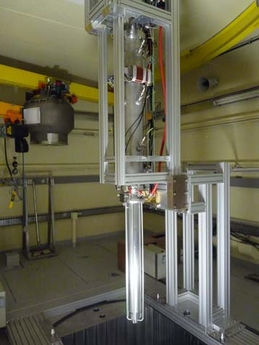The Belgian Nuclear Research Centre (SCK•CEN) has started operating the world’s first accelerator driven system (ADS). The demonstration project, known as Guinevere, couples a lead-cooled nuclear reactor with a particle accelerator. It could play a key role in deciding the future of high-level waste disposal.

The Guinevere project was initiated in collaboration with the French Centre National de la Recherche Scientifique (CNRS), the Commissariat à l'Energie Atomique et aux Energies Alternatives (CEA), a dozen other European laboratories and the European Commission.
The inauguration of Guinevere took place in March 2010 at SCK•CEN in Mol. During the first year the accelerator, as well as the ventilation and monitoring of the installation, were tested exhaustively. In February 2011, the reactor was started in the classic critical mode and was subjected to a long series of tests.
On 11 January 2012, SCK•CEN announced that the accelerator and the reactor had been successfully connected, making the system subcritical. This means that the reactor can be immediately stopped by turning off the particle accelerator.
Unlike conventional reactors systems, accelerator driven systems like Guinevere, produce fast neutrons that can be used for the transmutation of high-level radioactive waste. Transmutation is the fission of long-lived radioactive waste into products that are much less radiotoxic. This research complements the decision in favour of the geological disposal of this type of waste.
Guinevere has been designed to support the Myrrha project, is a test installation with a limited power. It is very important for the fine-tuning of the operation and control of future subcritical reactors, such as Myrrha, which is scheduled to become operational in 2023.
Related ArticlesJapan aims for ‘zero’ nuclear by 2030s




